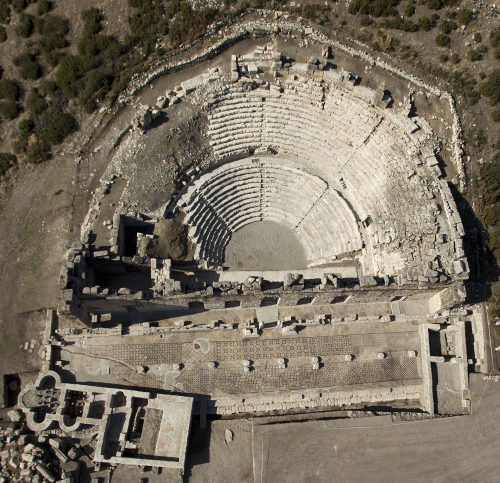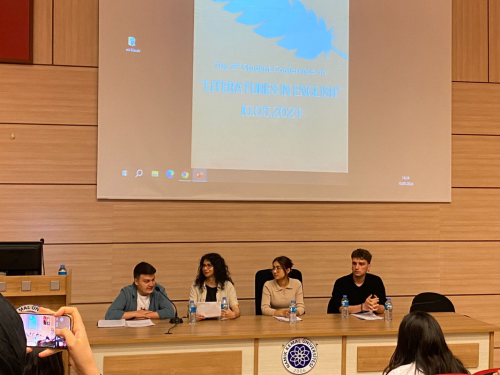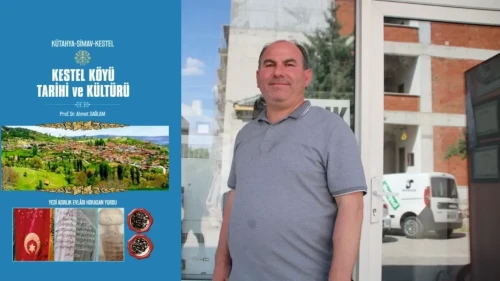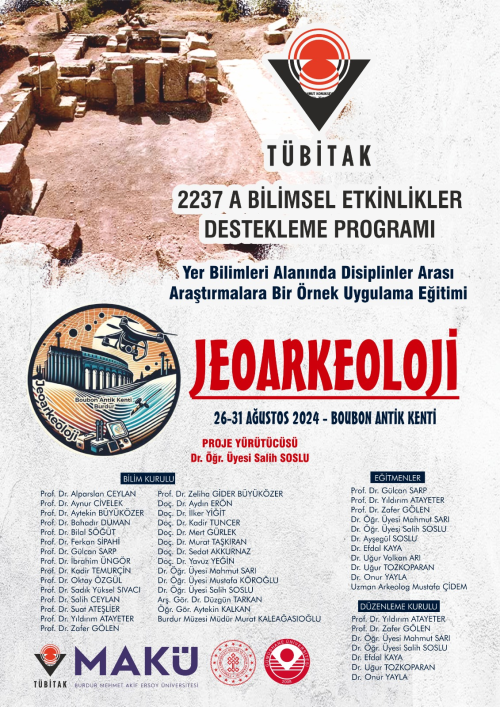Our Archaeology Department Continues to Bring Burdur's Historical Texture to Light
Yayın Tarihi | 04 August 2024, Sunday
Faculty members of the Department of Archaeology continue their efforts to bring to light the historical texture of Burdur.
The excavation works initiated in 2006 at the Ancient City of Kibyra have been carried out by a team led by Prof. Dr. Şükrü Özüdoğru, a faculty member of the Department of Archaeology, since 2010. Faculty members and students of MAKÜ put great effort into the works to uncover the structures of Odeion (Music House), Stadion (Stadium), and Agora (Market/Marketplace) in the Ancient City of Kibyra, located in the Gölhisar district.
The excavations carried out by MAKÜ faculty members contribute to the protection and promotion of historical and cultural heritage, as well as to the economic development by increasing the tourism potential of the region, emphasizing MAKÜ's importance on social contribution. Additionally, the participation of university students in fieldwork significantly contributes to their academic and professional development. Students reinforce their knowledge and skills through practical training opportunities. These works are of great importance both for the advancement of scientific research and for increasing the historical awareness of the local community.
On-Site Learning Opportunity for Students
Prof. Dr. Şükrü Özüdoğru, a faculty member of the MAKÜ Department of Archaeology, made statements about the works carried out in the Ancient City of Kibyra. Özüdoğru emphasized that they provide internship and on-site learning opportunities for students who choose the departments of archaeology and anthropology at MAKÜ. In his statement, Özüdoğru said:
“Our archaeology department, established in 2008, continues its educational life today with many faculty members. Our education continues at undergraduate, master's, and doctoral levels. The excavations and surface surveys carried out by our faculty members continue, especially focusing on Burdur. Since 2010, our excavations have been continuing in Kibyra, located in the Gölhisar district, on behalf of Burdur Mehmet Akif Ersoy University. Kibyra, with its significant and unique findings, is a large city that we strive to uncover with our team. When we first started the excavations, Kibyra was an unknown ancient city, but today it has become an archaeological site followed with interest on a national and international scale.”
Three Different Excavations and International Collaborations
Speaking about international collaborations, Özüdoğru continued his speech; “With the permissions and support of our Ministry of Culture and Tourism, we have three excavations ongoing in Burdur. The first is Kibyra, the second is in the Ancient City of Kremna in the Bucak district under the leadership of Prof. Dr. Ayça Polat Beks, and the third is in the Ancient City of Sagalassos. I have been appointed as the Turkish coordinator for the Sagalassos excavations, and we will continue our work in collaboration with the Catholic University of Leuven.
There are three internationally participated excavations carried out under the leadership of MAKÜ Department of Archaeology faculty members. Additionally, our faculty members continue surface surveys. Long-term Uylupınar surface surveys covering Kibyra and its surroundings were conducted under the leadership of Prof. Dr. Eray Dökü. Now, our professor Eray continues his research around Lake Salda and its vicinity. Prof. Dr. Ralf Beks conducts the Şereföyük Komama surface surveys. Numerous articles, books, papers, and symposiums are organized in these areas through international collaborations. Our excavation works are successfully carried out with the valuable contributions of our Ministry of Culture and Tourism's permissions and funds, Burdur Governorship, Mehmet Akif Ersoy University, and Gölhisar Municipality. Expert scientists from different national and international universities participate in the Kibyra Excavation and Research. Collaborations are made with universities such as Istanbul Technical University, Eskişehir Osman Gazi University, Akdeniz University, and Belgium's Catholic University of Leuven. These works, carried out to bring to light the historical texture of Burdur, provide significant contributions to both the historical past and cultural heritage of the province. Additionally, they contribute to obtaining economic returns by increasing Burdur's tourism potential.” he said.
Diğer Haberler












